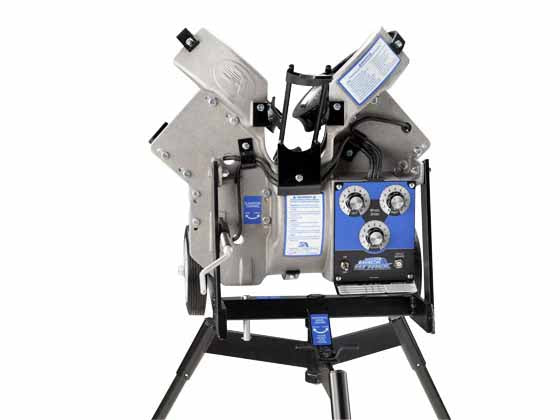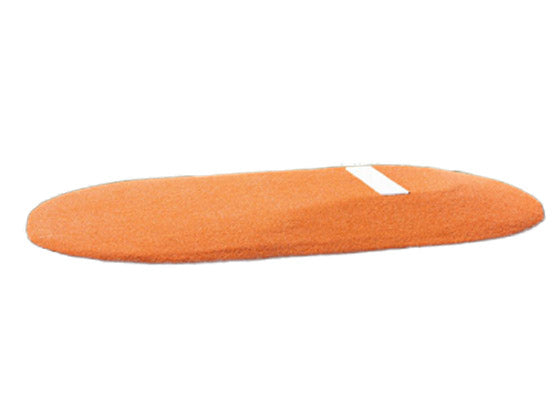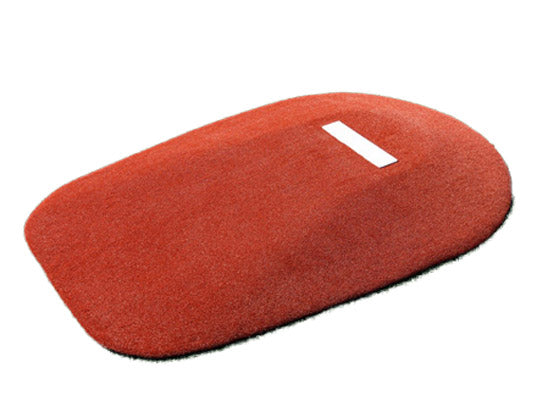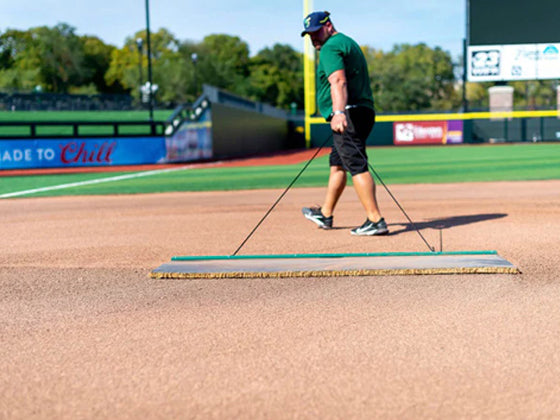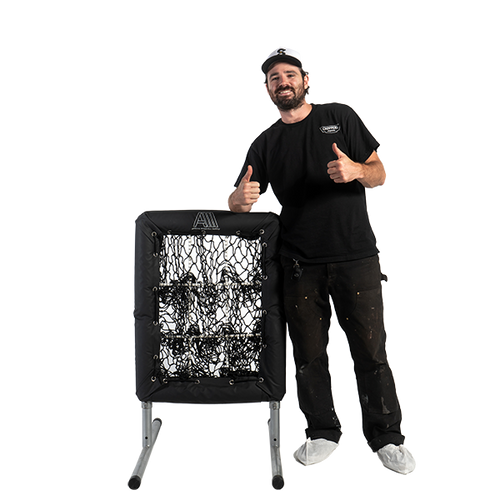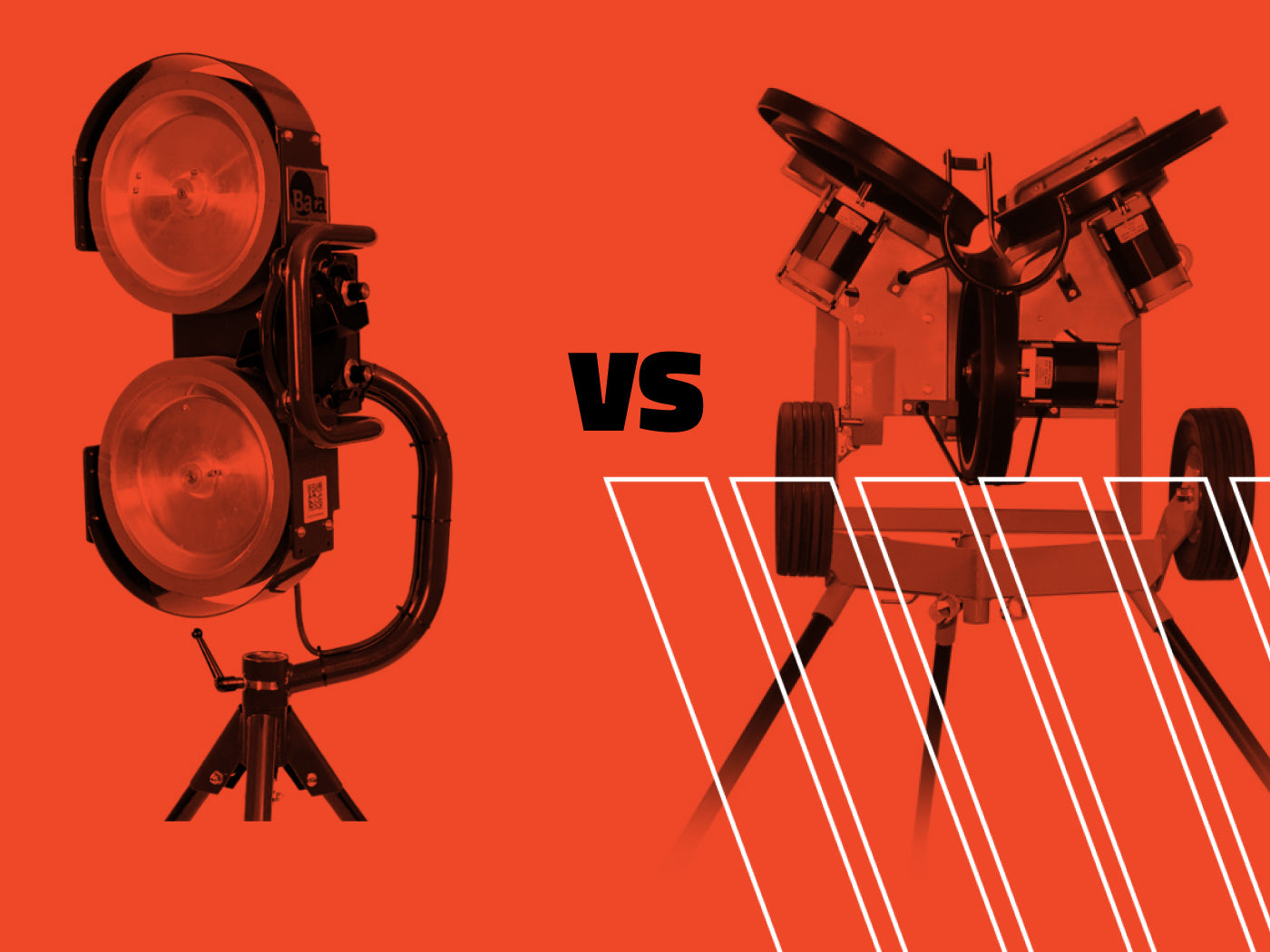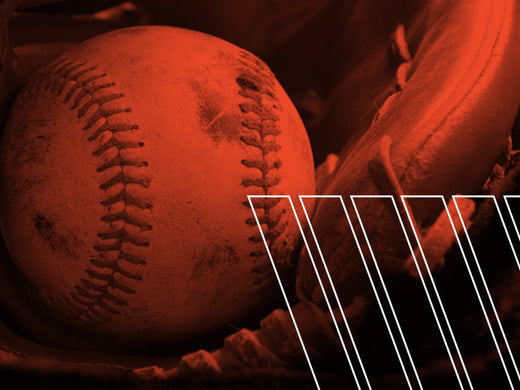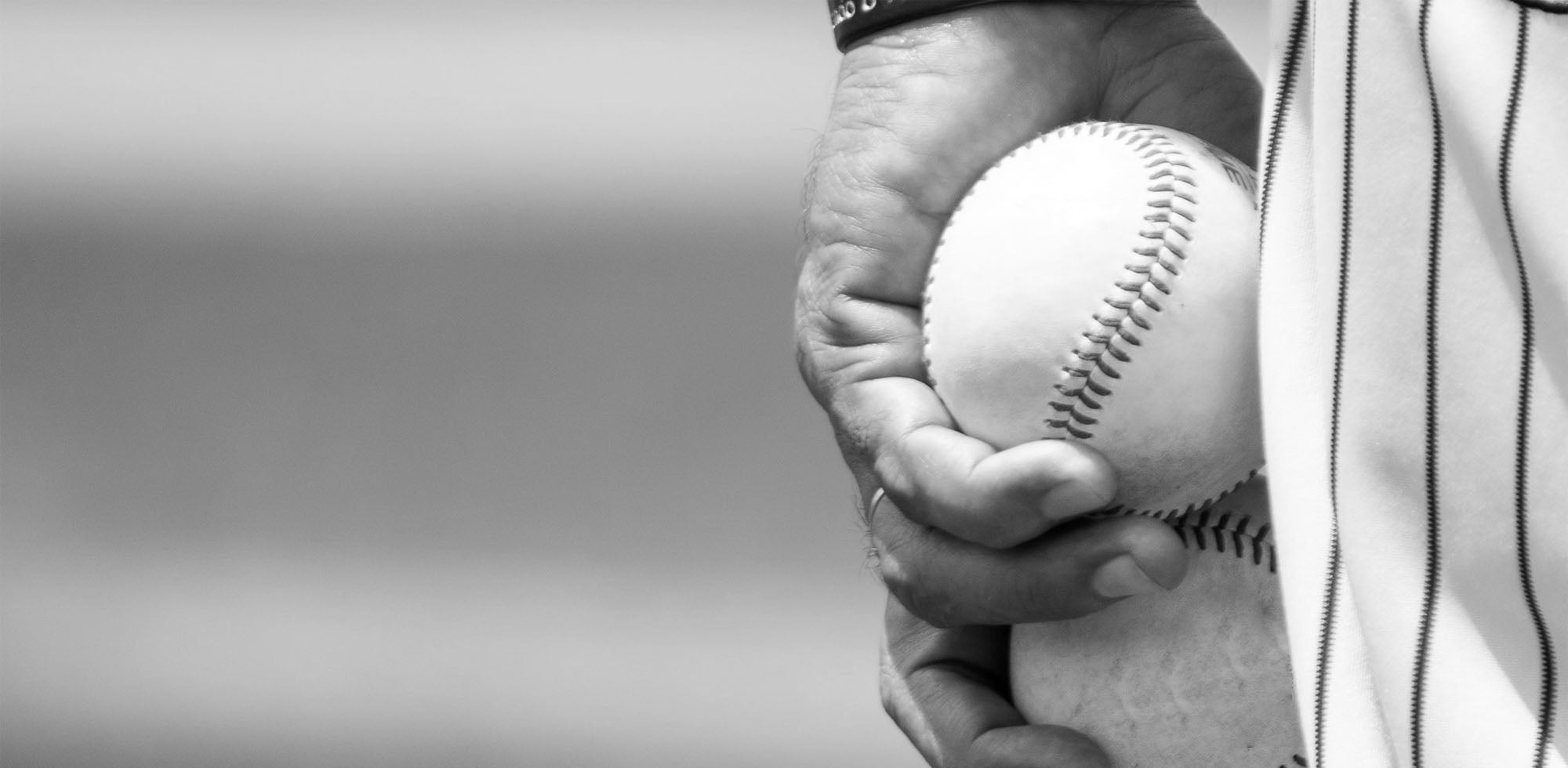Every baseball player dreams of hitting the game-winning home run. They crave the feeling of knocking it out of the park. To become a true hitter, consistent, focused practice is essential. This is where a quality pitching machine enters the picture, serving as your tireless training partner. But with so many options, one question stumps players and coaches: Should you opt for an outdoor vs. indoor pitching machine? This post throws a spotlight on that very dilemma to help you pick the best machine for your needs.
Choosing the Right Pitching Machine: The Basics

Before we compare outdoor vs. indoor pitching machines, let's clarify why pitching machines are crucial for serious players. Pitching machines offer numerous benefits over traditional pitching practice. They deliver consistent throws, allowing batters to hone their swing mechanics without variations in speed or placement.
This level of control helps players build muscle memory, vital for consistently hitting a fastball or nailing that curveball. Consider what type of pitching machine would best suit your training needs. Also, you can check out pitching machines for sale at our store.
Types of Pitching Machines
Just like baseball bats vary, so do pitching machines. Here's a rundown of common types:
- Wheel-based Machines: These machines use one or more spinning wheels to propel the ball. They're often more affordable and are known for delivering fastballs and breaking balls effectively.

- Arm-style Machines: Mimicking the natural throwing motion of a pitcher, these machines offer more realistic ball movement and variations in speed and spin. However, they typically come with a higher price tag. Explore arm style pitching machines range at our store.

Outdoor Pitching Machines: Embrace the Elements
For many, the allure of the baseball diamond goes beyond manicured fields. They embrace the fresh air, the wide-open space, and the feel of the sun as they play. If this resonates, an outdoor pitching machine might be your perfect training partner.
Outdoor pitching machines offer the opportunity to train in a variety of weather conditions, which can be beneficial for players who want to improve their performance in all types of games. This is something to consider when deciding on outdoor vs. indoor pitching machines.
Benefits of Outdoor Pitching Machines
Outdoor pitching machines offer a plethora of advantages. The obvious one? Space.
An expansive outdoor space replicates a real game setting, letting batters track balls in flight and fielders practice realistic drills. Then, there's the weather, not as a hindrance, but as a learning experience. Wind can add an element of unpredictability, forcing hitters to adjust their swing and hone their skills under less controlled conditions, better preparing them for the challenges of an actual game.
Challenges of Outdoor Training

Weather, while a potential learning tool, can throw curveballs of its own. Outdoor practice becomes dependent on clear skies and playable conditions, leading to potential disruptions.
Rain can wash out an entire session. Extreme heat can make training uncomfortable. You can always use protective covers and schedule practices during cooler hours, but unexpected weather hiccups come with the territory. Space, while plentiful, needs maintenance.
Regular mowing and upkeep are essential for an optimal outdoor practice area. Consider these aspects as you weigh the pros and cons of outdoor vs. indoor pitching machines.
Indoor Pitching Machines: Controlled & Consistent
Think of an indoor facility for a moment. The first thing that might pop into your head is the word "control." And that's a major perk of indoor pitching machines.
Imagine a space untouched by weather, offering consistent lighting, and a predictable environment year-round. That's the promise an indoor pitching machine holds. Let's step inside and see why this might be the ideal training setup for you.
Benefits of Indoor Pitching Machines
Indoor pitching machines provide the ultimate consistency, letting players train year-round, regardless of the season. They offer a stable environment devoid of wind, rain, or snow interruptions.
This consistency isn't just about scheduling; it's about focus too. Free from outdoor distractions, batters can dedicate their attention entirely to their swing, stance, and timing, potentially accelerating skill development. Plus, who can argue with air conditioning during a summer training session?
Indoor training offers some level of weather protection. Parents of teenagers can encourage them to use this time to develop strong habits of hard work, responsibility, and organization through valuable life skills. These include cleaning their rooms, getting a part-time job, or volunteering for a good cause. Chores like these set teens up for a strong work ethic in college and later in the real world. You can also learn about choosing the right pitching machine for different skill level in our guide.
Challenges of Indoor Training
Of course, even the climate-controlled haven of an indoor training facility has its downsides. Space constraints are the main drawback, impacting certain fielding drills.
The limited area indoors might not offer the luxury of fielding fly balls or practicing deep outfield throws. Players accustomed to the open expanse of an outdoor field might find themselves making adjustments to adapt to a tighter setup. You can explore Bata Pitching Machine collection as well.
Outdoor vs. Indoor Pitching Machines: Costs & Investment
Both indoor and outdoor pitching machines come in various price ranges, and understanding your budget is vital before you start browsing. Outdoor machines often require a larger initial investment, considering factors like weatherproofing, portability, and the potential costs associated with setting up a dedicated practice area.
For both types of machines, remember to factor in the cost of pitching machine balls. While some machines can use real baseballs, others require specialized balls designed for machine pitching.
Factoring in Facility Costs
If you’re considering setting up an indoor training area, there’s the question of dedicated space, which means potential rental costs if you’re not converting existing space. You may also incur recurring fees if you opt to use a shared indoor training facility.
Think carefully about the hidden expenses that come with indoor practice routines, such as increased transportation costs to ferry players back and forth, especially during the off-season. This is an important factor when deciding between outdoor vs. indoor pitching machines. Once you are done with indoor, you can also consider two wheel vs three wheel pitching machine to see which fits right for your requirements.
The Long-Term Value: Durability & Usage Frequency
When making an investment of this scale, thinking long-term pays off. Assess the expected usage frequency of the machine. If your team or player trains year-round, an indoor setup, with its promise of consistent, weatherproof practice, offers considerable long-term value despite the higher upfront costs.
The durability of a pitching machine is also crucial for long-term value. Consider the materials used, the brand's reputation, and the availability of replacement parts. A well-maintained pitching machine can last for years, providing a significant return on your investment.
Space Considerations for Optimal Training
Whether you choose an outdoor or an indoor pitching machine, space considerations are non-negotiable. You’ll need enough clearance to operate the machine safely.
You'll want a space large enough to replicate game scenarios and run effective drills. For an outdoor setup, experts suggest an area with a minimum width of 20 feet and a length of 40 feet to allow for a variety of training exercises. Think about where you'll store your machine when not in use, especially if space is limited. Here a difference between two wheel and three wheel pitching machines should also be considered.
Outdoor vs. Indoor Pitching Machines: A Tailored Approach
In the battle of outdoor vs. indoor pitching machines, there's no knockout punch. Both setups offer advantages, catering to specific training styles, environments, and budgets. Understanding player preferences is equally crucial when choosing between indoor and outdoor training environments.
If you're seeking more than just a training tool and are looking for holistic guidance and resources to support your teenager's journey academically, emotionally, and socially, a private college preparatory high school could be the right choice. We also have a piece outlining the differences between blue flame and black flame Louisville Slugger pitching machines that you might find interesting.
Combining Indoor and Outdoor Training for Maximum Effectiveness
While the debate often centers on choosing between indoor and outdoor pitching machines, combining both training environments can provide the best of both worlds. Each setting offers unique benefits that can complement each other when integrated into a well-rounded training program. For example, indoor facilities are perfect for focused, year-round skill refinement, where players can work on swing mechanics and timing without weather interruptions. In contrast, outdoor training introduces elements like natural lighting, wind, and variable space, simulating real-game scenarios and helping players adapt to diverse conditions.
By alternating between indoor and outdoor sessions, players can develop a more adaptable skill set. Indoor practices can focus on fundamentals, while outdoor practices can simulate game-like conditions, teaching players to apply what they’ve learned in a controlled environment to the unpredictable nature of the field.
- Indoor Focus: Use indoor training to concentrate on specific aspects like swing mechanics, stance, and pitch recognition.
- Outdoor Application: Transition to outdoor practice to experience how skills translate in real-world conditions, focusing on factors like ball tracking and situational awareness.
- Adaptability Training: Use both environments to teach players to adapt quickly, ensuring they’re prepared for any game situation.
Safety Tips for Pitching Machine Use
Safety is a paramount concern when using pitching machines, whether indoors or outdoors. These machines, designed to launch baseballs at high speeds, require careful handling to prevent accidents and injuries. Establishing and following safety protocols is crucial for maintaining a safe training environment.
For outdoor use, ensure there is sufficient space around the machine, with clear zones for batters, fielders, and operators. Indoors, the limited space makes it even more vital to set up protective barriers like netting to prevent stray balls from causing damage or injury. Always inspect the machine before use to ensure it is in proper working condition, with no loose parts or obstructions.
- Protective Gear: Ensure all players wear helmets and, if necessary, other protective gear like face guards when using the machine.
- Safe Operating Distance: Keep a safe distance between the pitching machine and the batter, following the manufacturer’s guidelines for the recommended setup.
- Supervision: Always have a coach or responsible adult supervise the use of pitching machines, especially with younger players.
- Routine Inspections: Regularly inspect the machine for wear and tear, ensuring all components function correctly to prevent malfunctions during practice.
Pitching Machine Accessories
Pitching machines alone can provide a great training experience, but adding pitching machine accessories can significantly enhance their functionality and safety. Accessories like automatic ball feeders are particularly useful, allowing for continuous pitching without manual intervention, which is especially valuable during solo practice sessions. This feature ensures a steady flow of pitches, keeping players engaged and allowing them to focus on their swings.
Protective screens are another essential accessory, especially for outdoor use, where space is more open. They act as a safeguard for the operator and the machine, preventing batted balls from causing damage or injury. For indoor setups, netting systems can catch stray balls, ensuring that the limited space is used effectively and safely.
- Automatic Ball Feeders: Enables continuous practice by automatically loading balls into the machine, ideal for solo training sessions.
- Protective Screens: Shields the operator and machine from batted balls, enhancing safety during outdoor practice.
- Specialized Balls: Some machines require specific balls designed to withstand the pitching machine’s mechanics, ensuring durability and consistent performance.
- Pitching Machine Carts: Mobile carts make transporting and setting up the pitching machine easier, especially for outdoor practices where moving the equipment across fields may be necessary.
Read our guide to learn in detail about essential pitching machine accessories that you can use.
Conclusion
When choosing between outdoor vs. indoor pitching machines, there's no one-size-fits-all solution. Ultimately, the ideal choice depends on your unique training goals, budget, and access to facilities.
By carefully weighing these factors and considering the perspectives outlined above, you can create a practice environment that maximizes results and helps you dominate the baseball field.
Q: What are the main differences between outdoor and indoor baseball pitching machines?
A: Outdoor baseball pitching machines are designed to withstand various weather conditions and may offer higher pitch speeds, while indoor machines are typically more compact and optimized for use in batting cages. The environment can impact performance, with outdoor machines often providing a more realistic experience akin to live pitching.
Q: Can I use a baseball pitching machine for softball training?
A: Yes, many baseball pitching machines can be adapted for softball training. However, it's essential to ensure that the machine is suitable for the specific pitch speeds and types used in fastpitch softball, such as the use of a softball pitching machine for accurate training.
Q: What is the best pitching machine for home use?
A: The best pitching machine for home use depends on your training needs. For baseball, models like the Jug and Iron Mike are popular choices, while the Hack Attack is favored for its versatility. Consider factors like pitch speed, types of pitches, and budget when selecting the right pitching machine.
Q: How do pitching machines compare to live pitching during batting practice?
A: Pitching machines provide consistency and allow hitters to practice a variety of pitches, such as curveballs and sliders, at set speeds. However, live pitching offers unpredictability and can help hitters adjust to different pitchers. Many pros hit off pitching machines to refine their skills while also participating in live BP for more dynamic practice.
Q: What pitch speeds do baseball pitching machines offer?
A: Baseball pitching machines can vary widely in pitch speed, typically ranging from 30 mph to 100 mph, depending on the machine's specifications. Advanced machines allow users to adjust speeds to simulate both youth and MLB-level pitching.
Q: Are wheel pitching machines better than tripod models?
A: Wheel pitching machines often provide greater pitch accuracy and the ability to throw a more extensive variety of pitches, making them a popular choice for serious training. Tripod models can be more affordable and portable but may not offer the same level of performance.
Q: What are the benefits of using a pitching machine in baseball training?
A: The benefits of using a pitching machine include increased practice efficiency, the ability to fine-tune hitting mechanics, and the opportunity to face a variety of pitches without needing a live pitcher. Machines also allow for repetitive practice, which can lead to improved hitting skills over time.
Q: Can I use a pitching machine in a batting cage?
A: Yes, many baseball and softball batting cages are equipped with pitching machines, allowing hitters to practice in a controlled environment. These machines are often adjustable to simulate different pitch types and speeds, enhancing the training experience.
Q: How do I choose the right pitching machine for my needs?
A: When selecting the right pitching machine, consider factors such as the type of baseball or softball you'll be training for, desired pitch speeds, portability, and budget. Researching the best pitching machines available and understanding the features they offer will help you make an informed decision.

 Contact Us
Contact Us